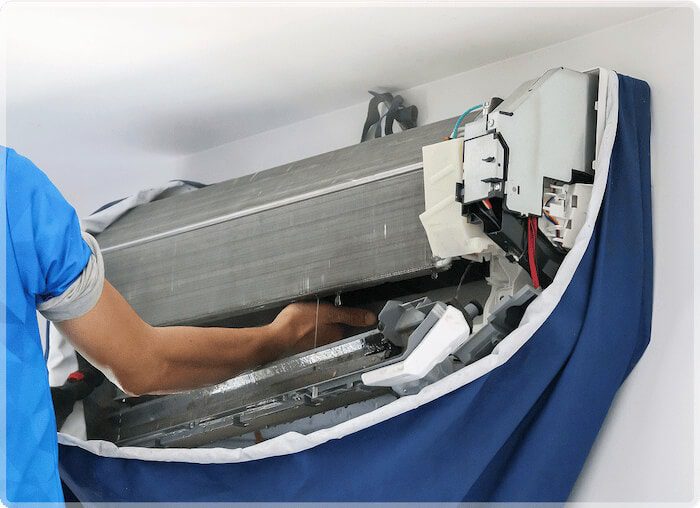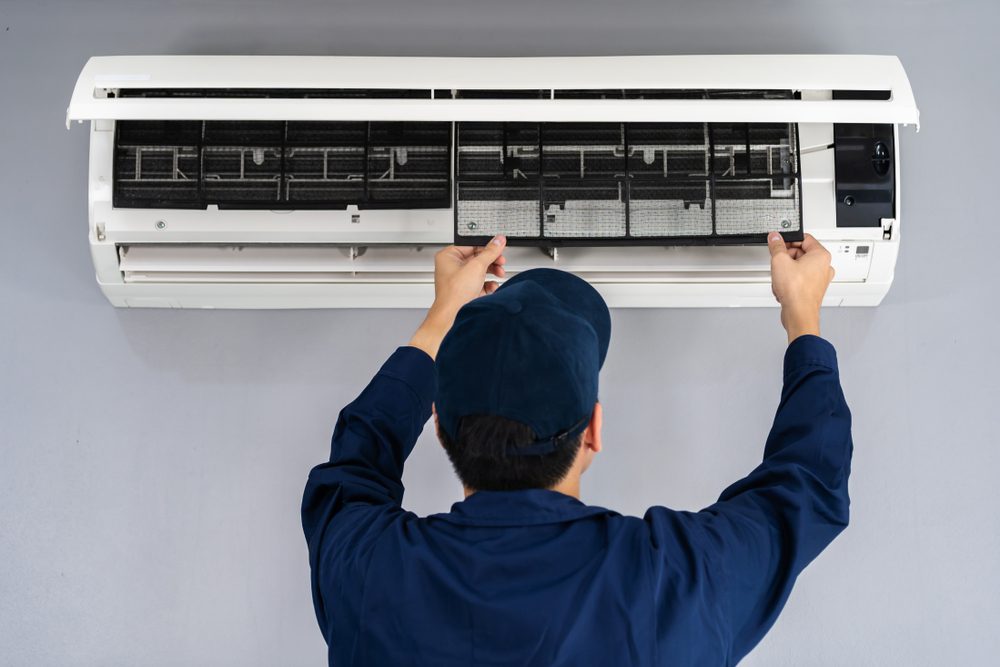A MERV rating, or Minimum Efficiency Reporting Value, is a number that shows how effectively an air filter captures airborne particles in your HVAC system. Choosing the right MERV rating directly affects both indoor air quality and the efficiency of your HVAC equipment. Knowing what these numbers mean makes it easier to pick the best filter for your specific needs, whether for allergy relief, pet dander control, or general household dust.
Service Air Eastern Shore’s dedication to providing top-notch HVAC solutions means understanding and educating homeowners on the importance of MERV ratings. Picking the right air filter isn’t just about cleaner air—it also helps protect your HVAC system and maintain its performance.
What Are Air Filter MERV Ratings?
MERV ratings play a crucial role in how well an HVAC filter captures airborne particles and impacts indoor air quality. Understanding the meaning and method behind MERV ratings helps homeowners and facility managers choose appropriate filters.
Understanding MERV Ratings
The Minimum Efficiency Reporting Value (MERV) is a standardized rating that measures the effectiveness of air filters. Developed by ASHRAE (American Society of Heating, Refrigerating and Air-Conditioning Engineers), this rating system helps users compare how well different filters capture contaminants from the air.
MERV ratings typically range from 1 to 20. A higher rating means the filter can trap smaller particles such as dust, pollen, mold spores, pet dander, and in higher ranges, even some bacteria and viruses. Most residential filters use MERV ratings between 6 and 13.
The aim of using MERV ratings is to create a balance between air cleanliness and the performance of the HVAC system. As the rating increases, the restriction on airflow can also increase, which may affect system efficiency if the filter is too restrictive for the HVAC unit.
Common MERV Ranges:
| MERV Rating | Typical Usage | Particles Captured |
| 1-4 | Basic residential, window AC | Large dust particles, lint |
| 5-8 | Standard residential | Dust mites, mold spores |
| 9-12 | Enhanced residential, hospitals | Fine dust, pet dander, smoke |
| 13-16 | Hospitals, superior homes | Bacteria, tobacco smoke |
| 17-20 | Cleanrooms, specialized labs | Viruses, carbon dust |
How MERV Ratings Are Determined
The MERV rating for an air filter is determined by testing its ability to trap particles within specific size ranges measured in microns. The test uses standardized methods to evaluate how effectively the filter removes these particles from the air.
Particles are sized between 0.3 and 10 microns for the purposes of these tests. The filter is exposed to a stream of air containing particles, and researchers record the percentage of particles it captures at each size interval.
The lowest efficiency recorded during the tests for each particle size group becomes the filter’s MERV score. This approach ensures consistency and accuracy in comparing different filters.
Manufacturers are required to submit their filters for third-party laboratory testing to receive an official MERV rating. A higher MERV rating means the filter is more efficient at trapping smaller and potentially more harmful particles. This may sound like the best air filters for HVAC, but it may also restrict airflow if the HVAC system isn’t designed for high-efficiency filters.
Exploring Different MERV Ratings
MERV ratings are a numerical system that measures how well an HVAC air filter can trap airborne particles of varying sizes. Understanding the differences between common MERV ranges helps homeowners select the best filter for their indoor air quality needs while maintaining proper HVAC system function.
Typical MERV Ranges and Their Meanings
MERV 1-4 filters are the most basic. They capture larger particles like dust, pollen, and lint but do not improve air quality much. These are often found in older or window AC units.
MERV 5-8 filters offer moderate filtration. They can trap dust mites, mold spores, and pet dander. This range is common in many residential HVAC systems and is generally sufficient for households without specific air quality concerns.
MERV 9-12 filters catch finer particles such as lead dust, auto emissions, and some bacteria. These filters improve air quality and are a good choice for homes with allergy sufferers.
MERV 13-16 filters provide high filtration and trap bacteria, smoke, and even some viruses. They are often used in hospitals or homes needing very clean air but may restrict airflow in some HVAC systems.
Benefits and Drawbacks of Various MERV Filters
Low MERV filters (1-4) are inexpensive and put little strain on HVAC systems but offer minimal air cleaning benefits. They are not ideal for allergy control or improving indoor air quality.
Mid-range MERV filters (5-8) balance cost, air flow, and filtration for most homes. These help reduce allergens and keep the HVAC system running efficiently.
Higher MERV filters (9-12) provide better dust and allergen removal. However, they can slightly reduce airflow if not changed regularly or if the HVAC system isn’t designed for denser media.
Very high MERV filters (13-16) remove the smallest particles, including bacteria and smoke. They can improve air in sensitive environments. However, they may restrict airflow or strain standard residential HVAC systems, so it’s important to verify compatibility before using them.
How to Choose the Right Air Filter for Your HVAC System
Selecting an air filter for an HVAC system involves understanding both household air quality needs and how certain filters affect the system’s efficiency. Attention to factors like filter type, MERV rating, and how often maintenance is needed will help ensure optimal indoor air quality and consistent performance.
Evaluating Home Environment and Air Quality Needs
Different homes require different air filters based on specific conditions and priorities. Households with pets, allergy sufferers, or high dust levels may need filters that capture finer particles. A higher MERV rating improves particle capture but may increase air resistance.
Families should consider whether residents have respiratory sensitivities or if the home is in a region with frequent pollen, smoke, or pollution events. Homes near construction zones or busy streets may also need more robust filtration.
In addition to MERV ratings, people must check filter sizes and confirm compatibility with their HVAC system. Replacing filters every 1–3 months (or as directed) keeps the system functioning properly and maintains indoor air quality. Look for filters designed for specific needs, such as odors or allergens, if those are a concern.

High-Efficiency Filters and HVAC Performance
High-efficiency filters, especially those rated MERV 13 or above, capture smaller airborne particles, leading to better air quality indoors. However, greater efficiency usually results in denser filter material, which can restrict airflow and strain the HVAC system.
Reduced airflow may cause less efficient operation, higher energy bills, or even system damage over time if the filter is incompatible. For older units or systems not designed for restrictive filters, it’s wise to stick with filters in the MERV 8–12 range for reliable performance.
Before choosing high-MERV filters, users should consult their HVAC manual or a technician to make sure the system can accommodate them. Regular monitoring and on-time filter replacement help prevent pressure drops and protect both air quality and system health.
How Service Air Eastern Shore Supports Better Air Quality
Service Air Eastern Shore provides practical support for homeowners seeking improved indoor air quality. Their experienced technicians focus on both selecting the most effective air filters and maintaining HVAC systems for sustained air performance.
Guidance in Selecting Appropriate Air Filters
Service Air Eastern Shore assists customers by recommending air filters that best fit specific home environments and HVAC system capabilities. We evaluate a home’s air quality needs, accounting for factors like family allergies, pets, and local air pollution.
Our team helps homeowners navigate the wide range of MERV-rated filters available. For those with heightened sensitivities or respiratory conditions, higher MERV or HEPA filters may be suggested for greater particle removal. At the same time, we ensure compatibility with the existing HVAC system to avoid strain on equipment or reduced airflow.
Our consultative approach also includes educating customers on filter sizes, maintenance intervals, and recognizing early signs of a clogged filter. This guidance prevents unnecessary system issues and helps maintain cleaner indoor air.





